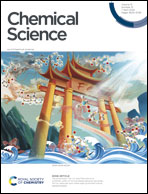Constructing ultra-stable, high-energy, and flexible aqueous zinc-ion batteries using environment-friendly organic cathodes†
Abstract
Due to their sustainability, environmental friendliness, high specific capacity, and rapid reaction kinetics, quinone cathodes have broad application prospects in aqueous zinc-ion batteries (AZIBs). However, conventional small-molecule quinone cathodes usually suffer from unavoidable dissolution, resulting in terrible cycling stability. Herein, based on a strategy of molecular structure optimization, calix[8]quinone (C8Q) is for the first time used as a cathode in AZIBs. By extending the structure of the classical small-molecule quinone cathode calix[4]quinone (C4Q), C8Q further adds four p-benzoquinone structural units, which significantly suppresses the dissolution of its discharge products and greatly improves the cycle stability of the cathode. Specifically, the C8Q cathode displays a discharge specific capacity of 207.2 mA h g−1 at 1 A g−1 and a long-life cycle stability (93 mA h g−1/10 A g−1/10000th). Even with a high active material loading of 11 mg cm−2, the Zn‖C8Q battery also exhibits high redox reversibility and remarkable electrochemical stability. Furthermore, the belt-shaped Zn‖C8Q battery has high stability and outstanding flexibility, indicating its promising application in flexible wearable electronic devices.



 Please wait while we load your content...
Please wait while we load your content...